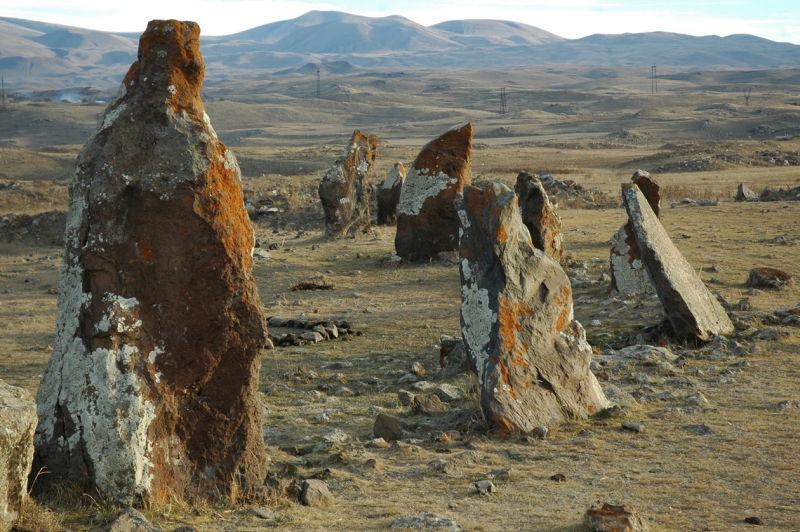The mysterious, unexplainable, and legendary settlement called Zorats Karer is remarkable and valuable in the milieu of world archeology. Zorats Karer is also known as Tsits Karer (prominent rocks), Dig-dig Karer (towering rocks) and Karahunj. Zorats Karer is one of the few megalithic monuments preserved in the world. It dates back to the III-II millennium B.C. It was built 6000 years ago, and was used for 4000 years up to the adoption of Christianity. A younger example of a building similar to Karahunj is the Stonehenge, preserved in England. The name Karahunj is pronounced similar to Stonehange and it means “Singing rocks” or “Sounding rocks”. Zorats Karer is 3km from Sisian City and it serves as evidence of ancient Armenian astronomical culture. There are dug out refuges, burial grounds (dolmens), cromlechs, menhirs and other cult structures, which are preserved here under а cover of hard rocks.
Remains from walls of strongholds have been preserved here and there. In the center of the settlement is the only two-room dwelling, which apparently belonged to the head of the tribe. It is surrounded by hundreds of large vertical rocks with orderly holes on them. The rocks cover an area of 3 hectares and are placed in a certain order. Holes were made to observe the movement of stars. It may be hard to believe that Karahunj was an astronomical observatory used by primitive men; however, on the other hand it is very probable that primitive men needed to study the movement of stars, which eventually became objects of warship, to find their bearings in time and space. The results of two expeditions conducted in 1994 and 1995 and led by academician Paris Heruni, the director of the Institute of Radio-physical Surveys, led to the conclusion that the cyclopean structure served as a temple, dedicated to the God of Sun. Karahunj was a very precise ancient astronomical observatory.



